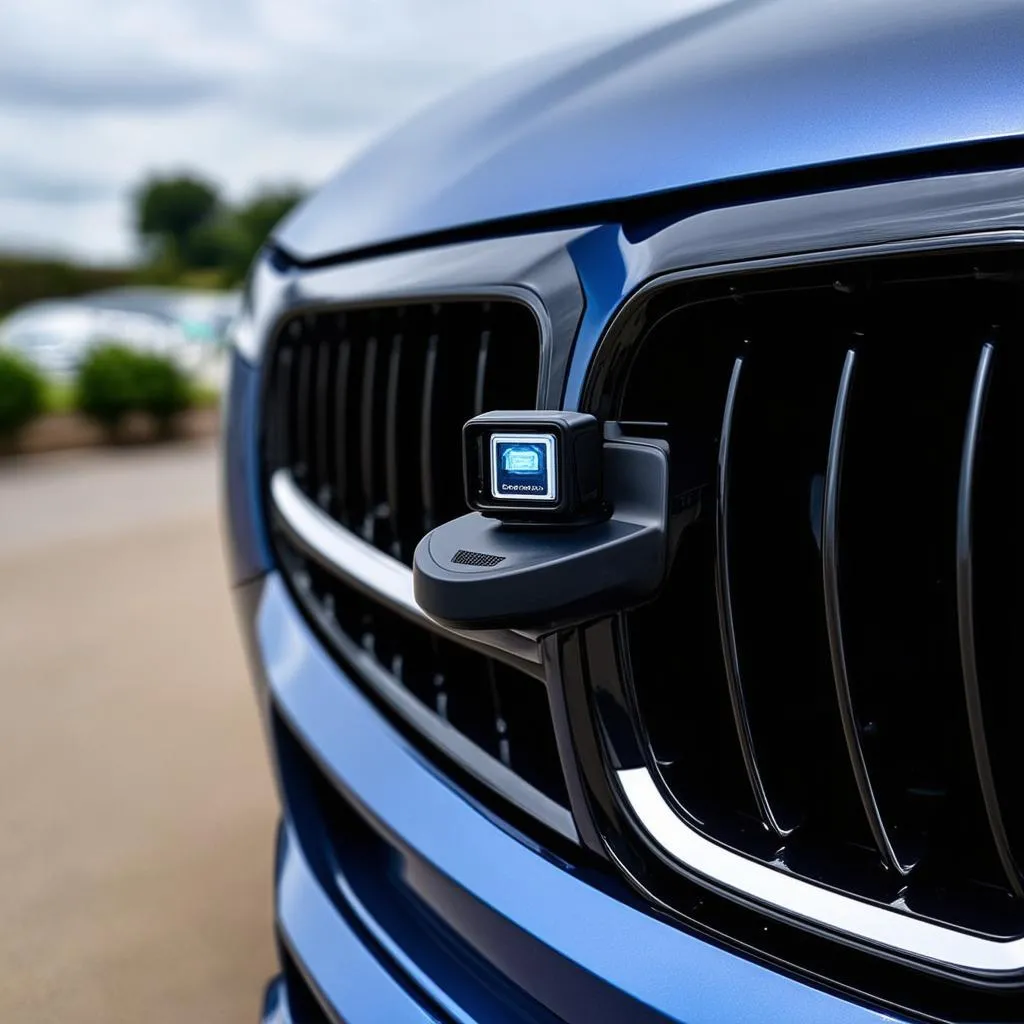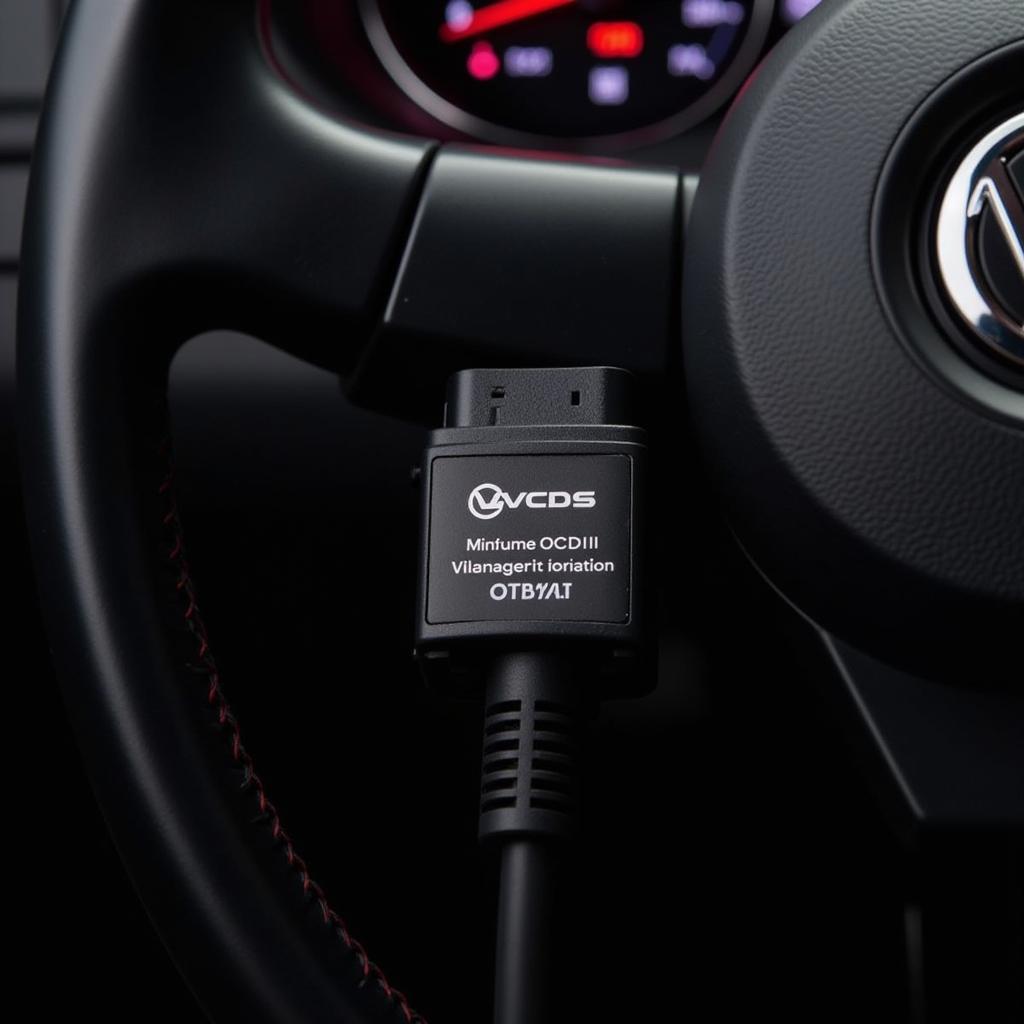Coding with VCDS (Vag-Com Diagnostic System) opens up a world of customization and troubleshooting for Volkswagen, Audi, Seat, and Skoda vehicles. This powerful diagnostic tool allows you to access and modify the control modules in your car, enabling you to tweak settings, activate hidden features, and diagnose complex issues.
Understanding the Power of VCDS Coding
VCDS coding gives you unparalleled control over your vehicle’s functions. From simple adjustments like enabling automatic locking to more advanced modifications like adjusting the cornering lights, VCDS empowers you to personalize your driving experience. Beyond customization, VCDS also plays a crucial role in diagnosing and resolving faults within the various electronic control units. This can be invaluable when troubleshooting complex issues that might otherwise be difficult to pinpoint.
Getting Started with VCDS Coding
Before diving into coding with VCDS, it’s essential to have the right tools and knowledge. First, you’ll need a genuine VCDS cable, not a cheap knock-off, as these can often cause more problems than they solve. Second, familiarize yourself with the VCDS software interface and its various functions. Understanding how to navigate the software and interpret the data is crucial for successful coding. Start with simple coding modifications and gradually progress to more complex ones as your confidence grows. Remember, coding incorrectly can lead to unintended consequences, so always proceed with caution and research thoroughly before making any changes.
Common VCDS Coding Applications
VCDS coding offers a wide range of applications for different vehicle systems. For example, you can use it to adjust the behavior of your automatic transmission, enable or disable certain convenience features, and even fine-tune the performance of your engine. Some popular coding modifications include enabling the coming home/leaving home lights, adjusting the daytime running lights, and modifying the behavior of the central locking system.
Coding with VCDS: Safety and Precautions
While VCDS coding opens up exciting possibilities, it’s crucial to approach it with caution. Always back up your existing coding before making any changes. This allows you to easily revert to the original settings if something goes wrong. Avoid experimenting with coding modifications you don’t fully understand. Research thoroughly and consult online forums or communities for guidance. Incorrect coding can lead to malfunctions or even damage to your vehicle’s electronic systems. If you are unsure about a specific coding modification, it’s always best to seek advice from an experienced VCDS user or a qualified automotive technician.
Similarly to [rns 510 coding vcds], careful consideration is necessary before making any adjustments. Remember, safety should always be your top priority when coding with VCDS.
Troubleshooting Common VCDS Coding Issues
Occasionally, you may encounter issues while coding with VCDS. One common problem is incorrect coding strings. Ensure you are using the correct coding string for your specific vehicle model and year. Another issue might be communication errors between the VCDS cable and the control module. Check your cable connections and ensure the ignition is switched on. If you continue to experience problems, consult online forums, communities, or contact the VCDS support team for assistance.
Advanced VCDS Coding Techniques
As you become more proficient with VCDS, you can explore more advanced coding techniques, such as long coding. This involves directly modifying the hexadecimal values within a control module to achieve specific functionalities. While long coding offers greater flexibility, it requires a deeper understanding of the control module’s structure and the implications of changing specific values. Like [abs coding vcds], advanced coding can offer significant benefits but requires a cautious approach.
This process shares similarities with [vw codieren vcds], emphasizing the need for precision and understanding. For those interested in [abs module coding vcds], there are numerous online resources available. Further information about specific Audi models, such as the [vcds audi a7], can also be found online.
Conclusion
Coding with VCDS can unlock hidden potential in your vehicle, allowing you to personalize its features and diagnose issues with greater precision. However, remember that responsible and informed coding is crucial. Always back up your original coding, research thoroughly, and proceed with caution to avoid unintended consequences. Mastering coding with VCDS empowers you to take control of your car’s functionality and optimize your driving experience.
FAQs
- What is VCDS? VCDS is a diagnostic software and hardware combination used for Volkswagen, Audi, Seat, and Skoda vehicles.
- Do I need special training to use VCDS? While not strictly required, having some technical knowledge and understanding of automotive systems is helpful.
- Is VCDS safe to use? Yes, as long as you follow the recommended precautions and avoid making changes you don’t understand.
- Where can I find VCDS coding information? Online forums, communities, and the official VCDS website are excellent resources.
- What should I do if I encounter an error while coding? First, double-check your coding string and connections. If the problem persists, seek assistance from experienced users or VCDS support.
- Can I damage my car with VCDS? Yes, incorrect coding can potentially damage electronic modules. Always proceed with caution.
- Is VCDS worth the investment? For car enthusiasts and DIYers who want greater control over their vehicle’s functionality, VCDS can be a valuable tool.
For further support, contact us via Whatsapp: +1 (641) 206-8880, Email: CARDIAGTECH[email protected] or visit us at 276 Reock St, City of Orange, NJ 07050, United States. We have a 24/7 customer support team available.


